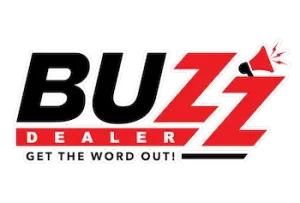The Invisible Hand of Online Platforms
The digital world is not as open as it seems. While businesses and individuals rely on social media, Google, and other platforms for visibility, these platforms have their own rules – often enforced by algorithms rather than people.
One day, your content is thriving. The next? Your engagement plummets. Your posts stop appearing in search results. Ads get rejected without explanation. Comments mysteriously disappear.
Welcome to the world of shadowbanning, content removal, and algorithmic suppression – where platforms control your reach, often without warning.
This post will uncover:
✅ What shadowbanning really is (and isn’t)
✅ Why businesses experience sudden drops in visibility
✅ How to avoid algorithmic penalties and stay on the right side of platform rules
What Is Shadowbanning?
Shadowbanning is when a platform limits your reach without notifying you. Your account remains active, but your posts get buried, engagement drops, and your visibility shrinks—without any official warning or ban.
It’s a stealth penalty, often applied when an account:
🔹 Repeatedly violates community guidelines (even minor infractions)
🔹 Gets mass-reported by users
🔹 Engages in behavior flagged as spammy or bot-like
🔹 Posts controversial or sensitive content (even if it technically follows the rules)
🔹 Is a new account that hasn’t yet built trust with the platform
🔹 Is an older account that suddenly changes its posting frequency drastically
Where does shadowbanning happen?
- Instagram & TikTok – Posts stop appearing in hashtags/explore pages
- Twitter/X – Replies and tweets become hidden in conversations
- Facebook & LinkedIn – Engagement drops drastically due to reduced visibility
- Reddit – Comments and posts appear normal to you but are invisible to others
- Google – Websites experience sudden ranking drops or deindexing without clear penalties
Many platforms deny shadowbanning exists, but users and businesses experience it constantly.
Algorithmic Suppression: When the Rules Change Without Warning
Not all visibility drops are shadowbans. Sometimes, algorithm updates simply decide your content is less relevant.
🔹 Google Algorithm Updates – A single update can sink a website’s rankings overnight.
🔹 Social Media Algorithms – Engagement-based feeds mean older tactics (like keyword stuffing or excessive hashtags) can backfire.
🔹 Ad Suppression – Some ads on Meta and Google Ads aren’t officially rejected but receive minimal exposure or delivery, often due to hidden quality scores, ad relevance, or platform discretion.
What triggers algorithmic suppression?
⚠️ Overuse of hashtags or repetitive keywords
⚠️ Spammy engagement practices (mass liking, commenting, or following/unfollowing)
⚠️ Misinformation flags – Even accidental fact-check violations can hurt visibility
⚠️ Political, controversial, or borderline content
Example: In 2023, several independent news websites in Turkey – including T24, Medyascope, Diken, and Birgun – were impacted by changes in Google’s algorithms. As a result, their visibility on platforms like Google Discover and Google News dropped significantly, leading to major traffic losses.
How to Stay on the Right Side of Platform Rules & Maximize Reach
The good news? Shadowbans and algorithmic penalties can often be avoided—or at least minimized. However, in some cases (like new accounts that haven’t yet built trust), they’re inevitable but will pass over time. Here’s how to reduce the risk:
1. Play by the Rules (Even the Unwritten Ones)
✅ Read official platform guidelines—and update your strategy when they change.
✅ Avoid spammy tactics (e.g., excessive automation, engagement pods, keyword stuffing).
✅ Be cautious with sensitive topics—even if your wording follows the rules, certain subjects can still trigger suppression.
2. Monitor Your Performance for Warning Signs
🚩 Engagement drops suddenly? You might be suppressed.
🔍 Go over your posts, identify potential issues, and adjust your strategy accordingly.
🚩 Posts getting rejected for no clear reason? Check for guideline violations.
🔍 Also, browse forums and communities to see if other advertisers are experiencing similar issues – you might not be alone.
🚩 Website rankings plummeting? You may need an SEO audit.
🔍 Check for recent Google updates and see if others are reporting similar ranking drops. Then, run a full SEO audit on your website with these changes in mind.
Use analytics tools like:
Website Performance:
- 🛠 Google Search Console: Monitor search visibility, indexing issues, and potential penalties.
- 📉 Google Analytics: Analyze traffic trends, user behavior, and identify engagement drops.
- 🔎 Rank Trackers: Keep track of keyword rankings and detect algorithm-related shifts.
Social Media Insights:
- 📊 Meta Business Suite Insights: Access comprehensive analytics for both Facebook and Instagram, including audience demographics, post performance, and engagement metrics.
- 📊 Twitter Analytics: Evaluate tweet performance, follower growth, and audience engagement to refine your Twitter strategy.
- 📊 Third-Party Tools: Platforms like Sprout Social and Hootsuite aggregate data across multiple social media channels, providing deeper insights into your audience and content performance.
SEO Health:
- 🔍 SEMrush: Conduct keyword research, site audits, and competitor analysis to maintain a healthy SEO profile.
- 🔍 Ahrefs: Perform backlink analysis and keyword exploration to gain in-depth insights into your site’s SEO performance.
- 🔍 Screaming Frog SEO Spider: Identify technical SEO issues such as broken links, duplicate content, and missing metadata through comprehensive site audits.
3. Diversify Your Digital Presence
Never rely on a single platform for visibility. Instead:
🔹 Build owned channels (email lists, blogs, community platforms).
🔹 Use multiple traffic sources (organic, paid, referral).
🔹 Maintain a strong reputation across different digital spaces.
4. Appeal Suppressions When Necessary and Possible
If you believe you’ve been unfairly penalized:
📩 Contact platform support (be professional and specific).
📑 Request a manual review for content removals.
🔄 Adjust content strategy to comply with policies.
Conclusion: Control Your Visibility Before It Controls You
Platforms may control reach, but smart businesses control their strategy. By following best practices and staying adaptable, you can stay visible, avoid algorithmic penalties, and protect your brand’s digital reputation.
At Buzz Dealer, we help brands navigate platform rules, recover from suppression, and build long-term digital authority. Need help? Let’s talk.
🚀 Contact Us to take control of your online presence today.

